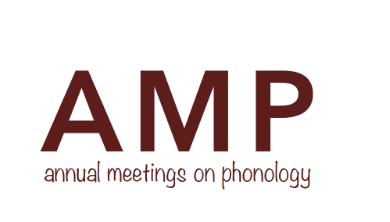General-over-specific Markedness Bias as a Balancing Force in GLA-style Learning
Abstract
Constraints with overlapping violation profiles cause challenges (cf. Credit Problem) for a GLA-type learner. These are exacerbated when combining stringency scales with no-disagreement constraints, producing a complex, overlapping constraint set. In the context of Finnic vowel pattern typology, I illustrate this problem with a North Estonian learner. Learning from positive evidence only and without a general-over-specific markedness bias, the learner overenthusiastically demotes general markedness constraints in favour of specific ones that are coincidentally unviolated by any input form. This produces a non-restrictive final grammar that achieves only a 0.7865 success rate during evaluation. A general-over-specific markedness bias enables the learner to overcome this issue. The bias is implemented as an initial hierarchy of markedness constraint values, calculated from each constraint's rate of application in a sample set of inputs, and can be freely reversed by learning data. Assigning higher initial ranking values to general markedness constraints facilitates acquisition of a more restrictive grammar and therefore allows the GLA to avoid the potential subset problem encountered by a less-restrictive learner. It works in concert with other established biases to enable the learner to successfully acquire the target grammar, increasing the success rate during evaluation to 0.9837.
How to Cite:
Vesik, K., (2025) “General-over-specific Markedness Bias as a Balancing Force in GLA-style Learning”, Proceedings of the Annual Meetings on Phonology 1(1). doi: https://doi.org/10.7275/amphonology.3032
Downloads:
Download PDF
237 Views
161 Downloads
